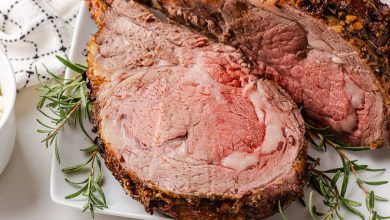Cornmeal (Degermed, Unenriched, White)
Cornmeal is a versatile and popular ingredient in many cuisines, especially in Southern and Latin American dishes. This particular variant, degermed and unenriched, is made from finely ground corn kernels, with the germ removed for a finer texture and longer shelf life. It serves as a staple in cornbread, polenta, and a variety of other baked goods or savory dishes. Below is a detailed breakdown of its nutritional profile and benefits.
Nutritional Information (per 100g serving)
| Nutrient | Amount |
|---|---|
| Energy | 370 kcal |
| Protein | 7.11 g |
| Total Fat | 1.75 g |
| Saturated Fat | 0.22 g |
| Carbohydrates | 79.45 g |
| Fiber | 3.9 g |
| Sugars | 1.61 g |
| Calcium | 3.0 mg |
| Iron | 1.1 mg |
| Magnesium | 32.0 mg |
| Phosphorus | 99.0 mg |
| Potassium | 142.0 mg |
| Sodium | 7.0 mg |
| Zinc | 0.66 mg |
| Copper | 0.076 mcg |
| Manganese | 0.174 mg |
| Selenium | 10.5 mcg |
| Vitamin C | 0.0 mg |
| Thiamin (Vitamin B1) | 0.14 mg |
| Riboflavin (Vitamin B2) | 0.05 mg |
| Niacin (Vitamin B3) | 1.0 mg |
| Vitamin B6 | 0.182 mg |
| Folate (Vitamin B9) | 30.0 mcg |
| Vitamin B12 | 0.0 mcg |
| Vitamin A | 0.0 mcg |
| Vitamin E | 0.12 mg |
| Vitamin D2 | 0.0 mcg |
Allergen Information
Cornmeal is naturally gluten-free, making it an excellent choice for individuals with gluten sensitivities or celiac disease. However, it is important to check for cross-contamination, especially if processed in facilities that also handle wheat products.
Dietary Preferences
- Gluten-Free: Ideal for those following a gluten-free diet.
- Vegan: Cornmeal is plant-based, suitable for vegan diets.
- Low in Fat: With only 1.75 grams of total fat, it’s a relatively low-fat option.
- High in Carbs: It is primarily composed of carbohydrates, making it a good source of energy.
- High in Fiber: With 3.9 grams of dietary fiber per 100 grams, cornmeal supports digestive health.
Cooking Tips and Advice
Cornmeal is a staple ingredient used in a wide range of recipes. It can be used to make cornbread, polenta, pancakes, and even as a breading for fried foods. Its slightly nutty, slightly sweet flavor makes it a versatile option in both savory and sweet dishes.
When preparing cornbread, for instance, you can combine it with buttermilk or milk to enhance its flavor and texture. For polenta, cook cornmeal in water or broth to create a creamy dish that can be enjoyed as a side or even topped with vegetables, cheese, or meat. Additionally, cornmeal can be used as a thickening agent in soups and stews.
For those seeking to create a healthier dish, opt for recipes that incorporate cornmeal with plenty of vegetables or lean proteins to balance out its carbohydrate content.
Conclusion
Cornmeal, particularly in its degermed and unenriched form, is a nutritious and versatile ingredient. Whether you’re looking to create a classic Southern-style cornbread or experimenting with new culinary creations, cornmeal offers a reliable base for a wide variety of dishes. Its high carbohydrate content provides energy, while its fiber helps promote digestive health. With its naturally gluten-free and vegan-friendly profile, cornmeal is a great choice for many dietary needs.










